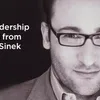Projects, knowledge, conversations: how to sustain performance and grow capabilities through strategic projects
Connected learnings from projects play an important role in organisational knowledge management and innovation. This book explores the important linkages between the tactical and strategic implications of projects.
Launched in 2012, YourStory's Book Review section features over 250 titles on creativity, innovation, entrepreneurship, and digital transformation. See also our related columns The Turning Point, Techie Tuesdays, and Storybites.

Companies need to deliver business impact today while also building capabilities for tomorrow, as explained in the book KNOWledge SUCCESSion: Sustained Performance and Capability Growth through Strategic Knowledge Projects by Arthur Shelley.
“The project management literature is largely separated from the literature on knowledge management, change management, leadership, and innovation. However, these are all closely linked,” the author explains.
The 12 chapters are spread across 220 pages, with many case studies and illustrative charts. The material is thoroughly referenced, with eight pages of cited books and online resources. Here are my key takeaways in the sections below, summarised as well in Table 1.
Arthur Shelley is the founder of Intelligent Answers, and former Global Knowledge Director for Cadbury Schweppes. Based in Melbourne, he is the producer of the ‘Creative Melbourne’ conference. With over 30 years of industry experience, his other books are Being a Successful Knowledge Leader and The Organizational Zoo. Arthur describes himself as a ‘pracademic,’ combining academic and industrial perspectives on knowledge-based organisations.
Projects and strategy
“KNOWledge SUCCESSion is a new strategy for achieving optimal performance in a world of emergent complexity,” Arthur begins. It includes knowledge co-creation and capture from projects as well as other aspects of synergy and alignment with overall organisational strategy.
Businesses today are driven as much by projects and portfolios as by processes, due to increasing ‘projectisation’ in shorter business cycles. Best practices need to be combined with agile approaches, as tactics and strategy are blended.
“In the projectised organisation, strategy has become the delivery of a series of aligned projects,” Arthur explains. Management of individual projects is combined with prioritisation of which projects need to be done in future.
The transfer, and application of knowledge in short-term cycles stimulates long-term value creation and collaborative experiential learning. “Better anticipation, prioritisation, and learning are common denominators in highly professional project organisations such as Arup, Fluor, and Tata,” he observes.
It is important to build knowledge, strengthen relationships, and improve conversations across a series of projects. “Knowledge is the fuel of success and social relationships are the lubricant for creative friction,” Arthur evocatively explains. Project management combined with knowledge management (KM) helps businesses remain viable and relevant.
Strategic projects are engines of knowledge transfer, and contribute to collective and organisational sensemaking. This requires a combination of reflection on past projects and a forward focus on strategy.

Value is derived from tangible and intangible assets, and accrue from case studies, tools, stories, conversations, and shared insights. Drawing on a range of literature, Arthur explains that “knowledge is powerful when shared, socialised, adapted, and reapplied.”
Arthur cautions that this may lead to seeming contradictions as multiple interpretations and avenues open up. This calls for both leadership (exploration, choice of an optimal path) and management (prioritisation, delivery).
“Genuine leaders have willing, intelligent followers,” Arthur emphasises. The choice is conscious and entails buy-in and conviction.
The path of innovation is uncertain and full of risk. “Supporting fast, cheap failure to learn quickly is a feature of the ‘safe-fail’ environment,” Arthur explains. Entrepreneurs are adept at moving from “failure to fruition” by learning and creating new knowledge.
Arthur cites Apple as a good example of a company which innovated by combining a range of available technologies into its smartphones, and “delivered desires that consumers did not know they had.” It eventually changed the dynamics of several other industries as well.
Interestingly, Arthur observes that some projects were considered a disaster at the time of completion but delivered far greater value later (eg. Sydney Opera House) – and vice-versa (eg. Sydney Harbour Tunnel).
Though companies capture project lessons, Arthur cautions they are often ignored later or referred to but not taken seriously enough. Employee turnover or lack of team continuity between projects can be a challenge (rebuilding trust and relationships) but also an advantage (more diversity of ideas and experience, less groupthink).
Arthur extends the discussion to voluntary knowledge-sharing communities across industries as well, such as KM4dev, Melbourne KMLF, SIKM LEADERS, IKMS, and ActKM. Knowledge curators play an important role as catalysts bringing in fresh perspectives and connections.
Sustained performance
Knowledge is a strategic asset, and knowledge projects build capability and learning. Successful ‘ambidextrous’ organisations combine ideation with implementation, and future vision with actionable projects, Arthur explains.
Unfortunately, strategy and project teams are often siloed, when instead conversation flows between them are needed for emergent knowledge. “Unfortunately, people are often too patterned in their thinking to notice the value in unintended outcomes,” he laments.
While it is important to know how to execute projects (time, quality, cost, scope), it is also important to understand what projects to choose and why. “Project professionals are now expected to go beyond processes and reporting to enhance the human aspects of delivering effective projects,” he observes.
Sharing of explicit and tacit knowledge should happen between projects in a portfolio that is aligned with a broader strategy. “Thus, projects remain a vital piece in a larger and more complex mix of people, capability, and knowledge in the evolving organisational and social context,” he writes.
Arthur traces influences on knowledge-based decision making to Aristotle’s three rhetorical modes of persuasion: ethos (ethics and credibility), pathos (emotional and symbolic perceptions), and logos (logic and rationale).
“Creativity and innovation are stimulated when knowledge is shared and remixed through an adaptive co-creation of new insights,” Arthur explains, drawing on the work of Gary Klein (see my book review of Seeing What Others Don’t).
“Enhancing performance through the better use of knowledge assets is the ultimate achievement of high-performing organisations,” he explains. This calls for a dedicated knowledge support team that also understands social and political aspects of KM, including retaining of critical knowledge held by ‘deep smarts’ (see my book review of Critical Knowledge Transfer by Dorothy Leonard).
From projects to knowledge
Rational, social and emotional intelligence are key for future business success at the personal and professional level. Arthur draws on design thinking, social learning, and adult learning models such as andragogy, eg. self-directed experience-based learning by internally motivated knowledge seekers. Knowledge flows happen through stories and corridor conversations as well.
Balanced scorecard approaches tend to miss out on intangible aspects of performance, but other awards (eg. those of APQC) focus on comprehensive KM. (See my write-up on the recent winners of the Most Innovative Knowledge Enterprise (MIKE) awards.)
Singapore’s Information and Knowledge Management Society (iKMS) came up with a framework for the Knowledge-Ready Organisation, based on strategy, leadership, culture, process, technology, and impact. (See my book series The KM Chronicles for case studies of winners of the earlier MAKE and Singapore KM Excellence Awards.)
Innovative companies encourage learning and experimenting without fear of reprisal in the face of failure. This calls for a mix of freedom and responsibility to learn and deliver, and judgment on when to accelerate and when to abandon an idea.
“Most successful entrepreneurs understand that failing is more an investment in the future than a cost. They view failure as a learning process that builds experiences and capabilities that will enhance their performance next time,” Arthur emphasises.
Questioning and listening
Active listening, questioning, and visioning are important but under-estimated skills, Arthur observes. To move from viability to achievement of an idea, he recommends that conversations proceed in the following sequence: value, people, process, and tools.
These map onto the questions why, who, what, where, when, and how. This helps determine which projects should be pursued or abandoned. It calls for knowledge brokers to participate in reflective conversations, and for leaders to ask exploratory questions.
“A powerful set of questions is the best utility you have in your kit. For a leader, it is a set of open questions to stimulate divergent exploration to generate opportunities. For a manager, it is a mixed set of open and closed questions that enable refining down to the root cause of the problem to be resolved,” Arthur emphasises.
Successful organisations mix such divergent and convergent activities, and move from exploration to execution. An inquiry should be followed by advocacy, Arthur explains. Diversity of experience, skills and opinion help in this regard.
“Faster churn across generations of leadership is a double-edged sword. It can prevent the organisation from becoming stale and disconnected and at the same time, can destroy the organisations by reducing its purpose,” Arthur observes.
Leaders and managers
“Unlike management, which is about following the clear path that we know is best, leadership is about finding new paths that take us in new directions, to secure new outcomes,” Arthur explains.
“What is clear is we do need to BOTH lead and manage at the right time in the right context in order to be successful,” he adds. If they are not careful, companies will only dream (leading without effective execution) or stagnate (managing without effective leadership).

The paradox of leading AND managing (figure reproduced with permission from author)
Knowing (knowledge), doing (skills), and being (behaviours and attitudes) are the primary aspects of capability, Arthur explains. Successful leaders have a growth mindset to see and achieve future possibilities, and continually challenge themselves.
They see beyond individual projects to synergies of portfolios. They are comfortable with multiple definitions of success, and have an emergent view of roadmaps. They encourage sustainable partnerships, and mentor and coach the next wave of leaders.
He divides organisational stakeholders into the following categories: Sponsors and Allies (high influence and support), Enthusiasts (low influence, high support), Opponents or Adversaries (high influence, low support, or aggressively against), and Watchers (low influence and support).
“Human beings are social creatures who need to be engaged rather than managed,” he explains. He observes that some organisations are beginning to adopt the 70:20:10 (experiential: social: formal) approach to building capabilities.
Reflection and feedback
Individual and group reflective cycles are key for capability development, Arthur emphasises. Examples include project reviews, post-project audits, lessons learned, simulations, and simply asking questions. These can be augmented by root-cause analysis or the Five Why’s.
The author explains the components of multiple-loop learning in this regard: actions and results (Loop 1: establish rules); assumptions and alternatives (Loop 2: redraft rules); and challenges and shifts (Loop 3: exploration).
Conversations that matter
“Conversations that matter” play an important role in generating creative friction in knowledge organisations; effective facilitators help drive organisational learning in this regard, Arthur explains.
Challenging one another constructively can lead to improvements and insights through “creative abrasion.” Techniques like the ‘Six Hats’ method of Edward de Bono are useful in this regard.
Such conversations can be messy and even controversial. “Competent leaders create a safe environment to debate a potentially unsafe topic, and this can defuse potential issues before they irreversibly damage relationships,” Arthur emphasises.
The focus should be on outputs, outcomes, tangibles/intangibles, benefits, and beneficiaries. Cross-cultural sensitivity is called for in such conversations, and facilitation them is an art and science.
Benjamin Bloom’s hierarchy is often cited in this regard, which involves Remember (describe knowledge), Understand (explain comprehension), Apply (leverage skills), Analyse (research and assess existing options), Evaluate (make judgments on options), and Create (make new ideas and develop new concepts).
Sample outputs of reflection include strategy reviews, after-action reviews, lessons learned, risk assessment, feedback, succession planning, and performance reviews. Outcomes can be better problem solving, improved organisational culture, and higher behavioural expectations.
The role of language
Language impacts vision, strategy and tactics in many ways. “It is not just the words that carry meaning; it is the context, symbolism, metaphors, tone, body language, and perceived intent that influence how what is said or written is interpreted,” Arthur explains. “Words even change in their meaning over time,” he cautions.
A sense of humour also helps organisations reduce hostility and tension, and improve communication and morale. Metaphors and visual aids can also be used to explain complex concepts.
Instead of binary distinctions between options (‘or’), combinations (‘and’) can be more powerful. Arthur explains that context determines how companies should combine capability and capacity; efficiency and effectiveness; outputs and outcomes; tactics and strategy.
“It is essential not only to build the capability (competency, knowledge, fitness, and faculty) of your resources, but also to have the capacity (volume and content) of resources to be able to deliver outputs and outcomes within the timeframes required,” Arthur writes.
Efficiency is about maximising output with minimum wastage. “Effectiveness, by comparison, is about how well the intended purpose or expected result was accomplished. It is about the quality and sustainability of the outcome,” he explains. This also affects how consumers perceive the features of products like smartphones, eg. robustness versus coolness.
Outputs are tactical, short-term, and tangible results. Outcomes, on the other hand, are strategic, long-term, and more intangible aspects of decision and actions, Arthur writes.
“High-performing organisations proactively plan so that tactical actions form foundations of the strategic plan as much as is possible,” he observes. “Get the balance between tactics and strategic actions right and the organisation benefits from both responsive incremental improvements and well-timed disruptive innovations,” he adds.
The role of behaviour
“Behaviour is a key to unlock innovation and knowledge sharing,” Arthur emphasises. Organisational culture is continually shaped by values, beliefs, norms, codes of conduct, behaviours, and habits.
In the context of innovation, judgment is needed to decide what behaviours to promote. “Too much acceleration and the creativity and innovation run off the path; too little results in the ideas stagnating or participants receding into groupthink,” Arthur cautions.
“Actively planning behaviour enables constructive development,” he advises. Gamification helps in this regard, as well as understanding the different archetypes in the organisation.
Getting stakeholder buy-in
“The world is full of great ideas that never succeed,” Arthur observes. “One of the key reasons is that the idea did not influence enough potential “buyers” or followers to embrace the product or service,” he adds.
Successful leaders motivate others, share kudos, reward in a fair manner, stimulate diversity, and create a failsafe environment to build trust. They have willing and intelligent followers, and leverage logic, emotion, and credibility in persuasion and influence.
Arthur describes their effective sequence of “creating Awareness to build Attitude to highlight Ability to generate Action,” in successive waves of influence. This helps generate understanding, engagement, and action.
“The more you share knowledge, the more collaborative co-creation of new knowledge happens, which is the fuel for innovation and performance,” he explains. “Leaders benefit by being a role model, sharing their own mistakes, and highlighting what they learn from good and bad experiences,” he adds.
Theory versus practice
One important chapter highlights the difference between academic and practitioner views of the business world. “Practitioners are more interested in outcomes and relevance. Academics are more interested in processes and rigour,” Arthur observes, describing himself as a ‘pracademic’ in this regard with a blend of both mindsets.
Neither camp tends to value the other’s style of literature, unfortunately, when there are useful synergies possible. Academic articles are robust and often cite heavy statistical analysis of large volumes of data.
These are useful, but professionals also value ‘gut-feel’ opinions of business leaders with a credible record; these are sometimes published as first-person blogs. Professionals prefer applicable principles for decision-making, often expressed in conversational language rather than jargon.
Fortunately, dialogue between academics and practitioners is improving, and the rise of visualisation tools and video talks is helping bridge the communication gap between them.
Examples and profiles
Each chapter in the book illustrates the above principles with brief corporate profiles. For example, MAKE award winner PwC has a content platform called Gateway, and a collaboration and networking tool called Spark. This helped go beyond transaction to transformation, and accelerated the development of unified communities and thought leadership, eg. via documents on incentives.
Architecture firm Arup institutionalised research and knowledge sharing through the Arup University in 2009. Its strategic roadmap covers phases called ‘Now, New and Next.’ Knowledge brands called Arup Projects and Arup People span 50 communities of practice (CoPs) for skills. ‘Tech burst’ and ‘tech bite’ sessions enable formal and informal knowledge harvesting. Internal experts and external academics conduct training and research activities.
Unisys has research paper contests to promote learning and thought leadership. Patenting is evangelised and supported, and prolific inventors are roped in as ‘sniffers’ to identify potential innovative ideas. Successes are highlighted through financial rewards and certificates via ‘All Hands Meets’ and the ‘Wall of Fame.’ This has helped increase ‘patent productivity’ of employees.
NASA has an Optical Design Lab which increases the exposure of designers to multiple projects from various missions. A database tool helps access prior projects, thus helping avoid ‘reinventing the wheel.’
The US Navy leveraged KM to ‘catapult’ to the next level of performance, and combines knowledge, learning, and IT via cross-cutting communities. This includes a Knowledge Fair, video capsules, learning games, and ‘imagineering’ activities to ensure that knowledge is ‘everyone’s business.’
US consulting firm Working Knowledge leverages knowledge assets, repositories and artefacts along with harvested knowledge from organisational and practitioner-driven CoPs. Roles like knowledge engineers and engagement knowledge managers help realise the objective of ‘connect, collect and collaborate.’ Learnings are captured from successes as well as failures.
Australian consulting firm Acknowledge Consulting hosts informal conversations to improve morale, improve communication, enable discovery, and encourage people to ask for help when needed. Serendipitous ‘water cooler’ conversations, as well as scheduled casual conversations, help in this regard.
Engineering firm Seven Sigma uses recorded video interviews of managers, mapped onto sections like lessons learned and alternative ideas (using the tool Glyma). This spurs discussion on ‘meta-themes’ that distil their collective wisdom.
Even simple tools like workable enterprise architecture, intuitive folder structure, naming conventions, and email guidelines can deliver benefits without expensive solutions, as shown by information management solutions firm Experience Matters.
Bootleg Innovation Design urges entrepreneurs to immerse themselves in customer communities to understand their emotional needs and not just functional needs. “Insighting methodologies” help unearth customer preferences for packaging and relevant events.
Delta Knowledge leveraged cloud-based Wiki tools for teams to share not just what they do but why they do it and how they view each other’s contributions. This promoted shared understanding, which helped in several cases like deciding on the choice of an ERP tool for implementation.
Cirque du Soleil has a participative culture which helps reduce employee turnover. “Tour camps” conducted before travel to international venues help convert any fears into curiosity, and promote cultural respect and appreciation of ethics.
In sum, the author lives up to his promise of being a ‘pracademic’ by combining case studies and industry experience with an academic treatment of supporting literature and theory. The book is a useful reference for KM professionals, project managers, innovators, and scale-stage startups.
Edited by Kanishk Singh












